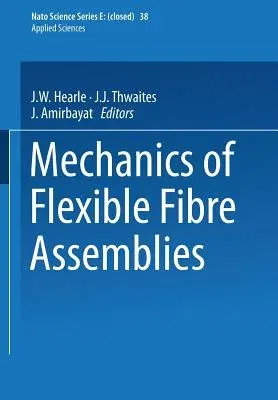Mechanics of Flexible Fibre Assemblies (Softcover Reprint of the Original 1st 1980)Paperback - Softcover Reprint of the Original 1st 1980, 3 October 2013

Qty
1
Turbo
Ships in 2 - 3 days
In Stock
Free Delivery
Cash on Delivery
15 Days
Free Returns
Secure Checkout
Part of Series
NATO Science Series E:
Part of Series
NATO Science Series E: (Closed)
Print Length
653 pages
Language
English
Publisher
Springer
Date Published
3 Oct 2013
ISBN-10
9401197768
ISBN-13
9789401197762
Description
Product Details
Book Edition:
Softcover Reprint of the Original 1st 1980
Book Format:
Paperback
Country of Origin:
NL
Date Published:
3 October 2013
Dimensions:
24.41 x
16.99 x
3.38 cm
ISBN-10:
9401197768
ISBN-13:
9789401197762
Language:
English
Location:
Dordrecht
Pages:
653
Publisher:
Weight:
1038.73 gm

